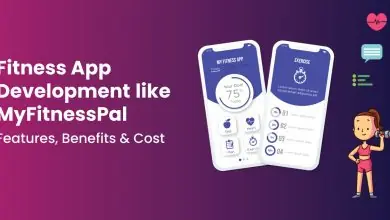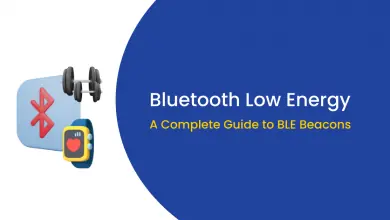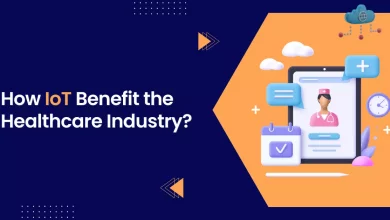How Much Would It Cost to Develop IoT Home Automation App
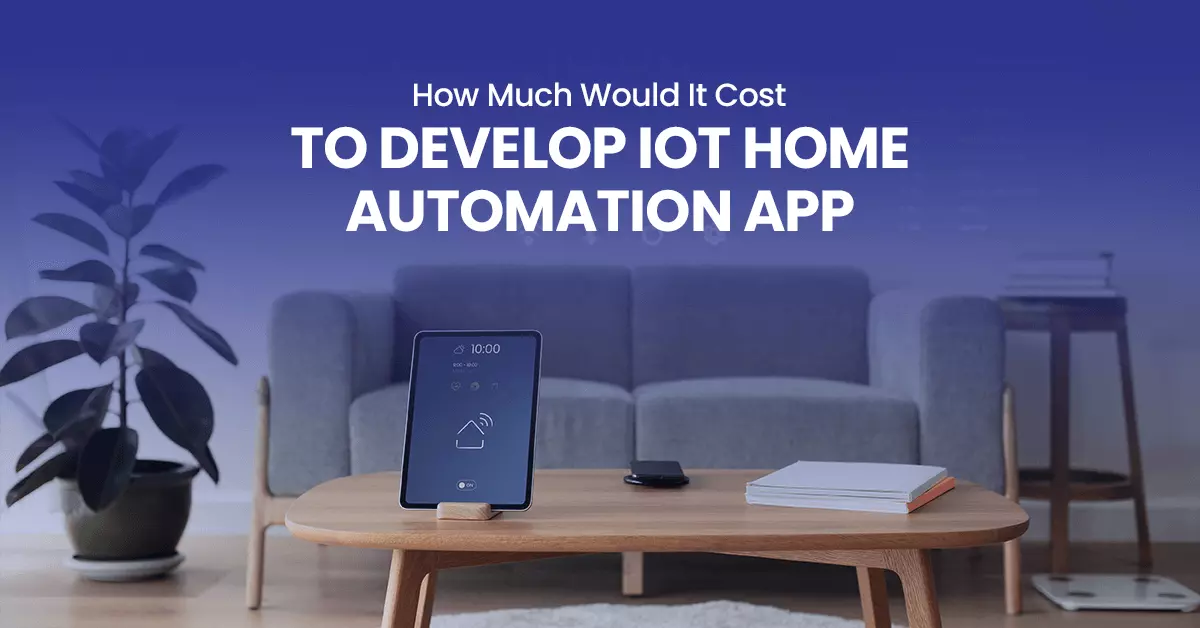
IoT Development has gone a long way in the last few years, and as a result, a large number of businesses and organizations have shifted their focus to IoT App Development Cost in order to uncover deeper and more unexplored commercial potential. If recent advancements in smart house trends are to be considered, using home automation devices to track and reduce energy usage will quickly become standard practice. The usage of mobile devices such as smartphones, tablets, and iPads as interfaces for home automation will become progressively widespread.
This clearly indicates that the market for home automation solutions is going to become highly lucrative in the years to come. One common concern, though, is the expenses associated with developing an IoT app. That is one of the queries that gets brought up the most frequently to anybody working at an IoT mobile app development company. The price of home automation apps development is influenced by an array of variables. This article provides a concise summary of the chief considerations pertaining to IoT App Development Costs.
A Must-Have Set of Features for a Home Automation App
To preside over today’s highly competitive IoT device management app industry, one has to hanker after a product that shines differently in the crowd. However, there are some absolute essentials that you can’t afford to miss out on in IoT mobile app development, a few of which are mentioned below:
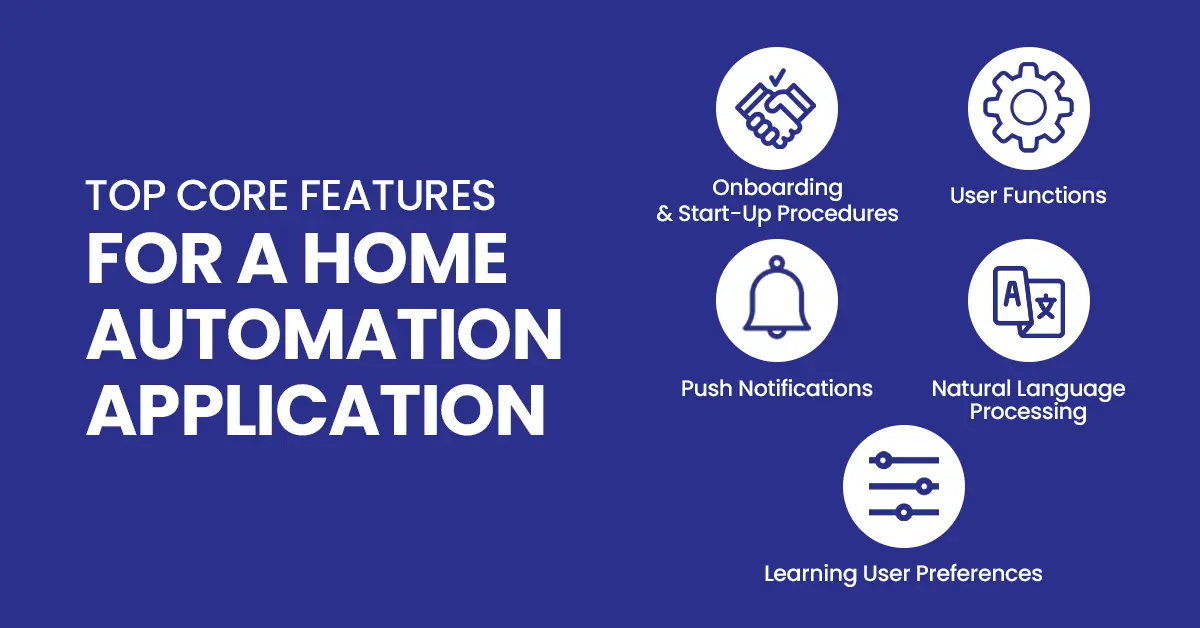
1. Onboarding & Start-Up Procedures
The on boarding feature helps a consumer get started with their new gadget by walking them through initial tasks including connecting it to the internet, making an account, and learning how to use the app.
2. User Functions
Distribution of user responsibilities is a crucial aspect of any smart home software. Alarm systems and locks demand monitoring and specific attention to who accesses the software and personal data.
3. Push Notifications
If properly planned and set up, push alerts can be incredibly useful, or extremely irritating otherwise. For this reason, many smart systems include options for personalizing alerts based on their relevance and usefulness.
4. Natural Language Processing
Many home automation applications depend on natural language processing (NLP) instruments like Amazon Transcribe and Azure Custom Speech Service to convert verbal commands into action. These apps help to separate a user’s speech from any ambient noise, digitize it, and upload it to the cloud, where it can be analyzed by natural language processing software. The Smart Home’s web server then gathers relevant context from external sources or its internal database, and then takes the necessary next step.
5. Learning User Preferences
Over time, machine learning-enabled home automation applications absorb the user’s preferences for the management of the house’s most important appliances, such as air conditioner temperatures, lighting settings, etc.
Factors that Impact the Cost of IoT Home Automation App Development
The procedure to build your Smart Home application is extensive and intricate. A variety of considerations, such as the developer’s experience, the complexity of the software, the availability of premade components, etc., can influence the overall financial estimate. Let’s take a look at a few of the most important variables that determine the budget when if are looking to develop an IoT home automation app.
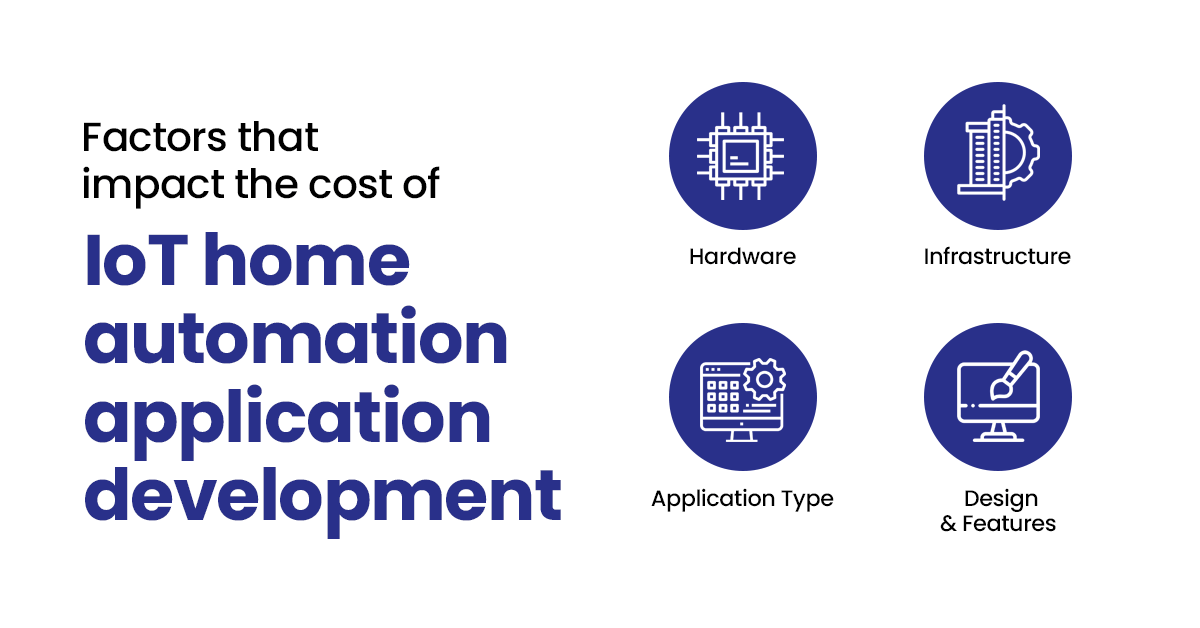
1. Hardware
In the development of an IoT solution, the cost associated with building the smart device constitutes a significant proportion, typically ranging between 70-80% of the total cost. This cost is dependent on the nature and complexity of the desired solution. The cost of hardware design involves several stages:
1. Analysis
During the analysis phase, the budget is planned, and technical specifications are developed to optimize costs.
2. Modeling
The modeling stage involves the development of the PCB layout schemes and interior elements by industrial designers and engineers.
3. Prototyping
Prototyping involves the creation and testing of over 10 PCBs by hardware device manufacturers or IoT app developers, followed by debugging and modification.
4. Testing
Finally, successful prototypes are transformed into pre-production models that undergo various tests such as climatic, pre-certification, electrical safety, and user tests, using different materials for device casing.
2. Infrastructure
While building an IoT home automation solution, the creation of a management support and tracking system is a crucial component of the underlying infrastructure. Three primary elements constitute the infrastructure, these include the Network, Middleware, and Cloud Storage. Cumulatively, they determine how much it costs roughly to develop a home automation solution.
1. Network
In order to achieve its intended purpose, the IoT ecosystem requires a highly scalable network infrastructure with high-speed connections and low latency. IoT connectivity primarily relies on short-range wireless cellular and LPWAN solutions.
2. Middleware
If third-party devices are to be integrated into the IoT ecosystem, middleware is required to act as an interface between the various IoT components and connect devices that would otherwise be unable to communicate.
3. Cloud Storage
Cloud-based infrastructure provides storage software and solutions to refine large amounts of raw data into meaningful information. However, implementing cloud computing solutions can add a significant cost to the overall IoT app development expenses.

3. Application Type
IoT Mobile Application development can be categorized into three performance-based parts, which are basic, medium, and complex, each with its own development difficulties that contribute to the estimated costs.
1. Basic
These applications utilize programming tools to provide real-time information in conjunction with customer tracking.
2. Medium
These applications visualize and share data progress across connected devices.
3. Complex
These applications integrate with multiple radiation monitoring devices and contain additional features that increase the overall cost.
4. Design & Features
The success or failure of an app’s development hinges to a substantial degree on the functionality and visual appeal of the finished product. If the complexity of the IoT project’s design and functionality is increased, the financial blueprint can tremble wildly. If the premium features such as third-party integration and push notifications are also implemented, additional financing will be needed upfront.
So, How much Does IoT App Development Cost?
There are several steps that go into developing home automation software, and each one is as important as the next one. Let’s talk about the various app development phases as well as how much each one costs on average.
1. Market Research
The first step is to do market research, which includes analyzing the market competition and spotting emerging trends. Before making a move, you should research the industry and your specific niche to ensure you have a solid foundation. Your familiarity with the industry will inform every design decision you make, from the app’s core features to the aesthetics of its user interface. The research expenses for home automation software range from $50 to $350.
2. UX Design
Wireframes are a visual representation of the app’s final design that the developers will produce for you. This now generally includes both low- and high-fidelity wireframes. The time commitment may range from 14 hours to 140 hours. Broadly, you can expect to shell out between $2,000 and $10,000.
3. UI Design
You can’t skip out on aesthetics. Taking into account the unique characteristic of the niche, the designers will draught mood boards from which you may choose. After receiving feedback from the customer, the UI mockups will be refined into the final product. You’re looking at a range of 17 hours to 210 hours. Also, the price tag is likely to be somewhere in the range of $1000 – $5000.
4. Visual Representations
It may cost anywhere from $1,000 to $30,000 to include animation into the site to show loading progress or other processes that rely on visual cues. Including this feature helps to provide a more stimulating user experience.
5. App Testing
There are a lot of moving parts involved in testing an automation software package, since it must be capable of functioning smoothly on every platform and device. This means that you would wind up paying anywhere from $3,000 to $10,000 for this.
If you add up the prices of all of the various aforementioned stages, the total stockpile of your project can probably fall somewhere between $30,000 and $50,000. That’s what you can expect to pay for a barebones home automation solution. That may be a pricey gamble, since statistics show that 75 percent of IoT initiatives never lead to finished, sellable products.
How to Cut Down Home Automation Development Costs and Avoid a Fiasco
If you’re working with a shoestring budget and trying to develop an app, you certainly would benefit from a few pointers on where to cut corners. Here are 3 research-backed recommendations that should significantly cut the expense of developing your home automation solution.
1. Develop a Comprehensive Checklist for the Project
Specify your requirements in depth to the software development team you’ve hired or the in-house developers you’re working with. By doing this, you would be able to speed up the development process and help ease the workload on your software developers.
2. Minimize Application Development Errors and Rework
Instruct the team tasked with developing your software to conduct parallel testing. Errors found after your mobile app’s development has finished might potentially cause additional expenditures to be incurred as the software will need to be rewritten.
3. Design a Hybrid Mobile Application
If you are looking to create an app for both platforms but have a restricted budget, you may want to consider hybrid mobile application development. However, hybrid is not strongly advised if the software has to extensively communicate with the device’s hardware.
Challenges Faced in Developing an IoT Home Automation App
Developing an IoT home automation app comes with several challenges. Here are a few obstacles that you may face during IoT app development:
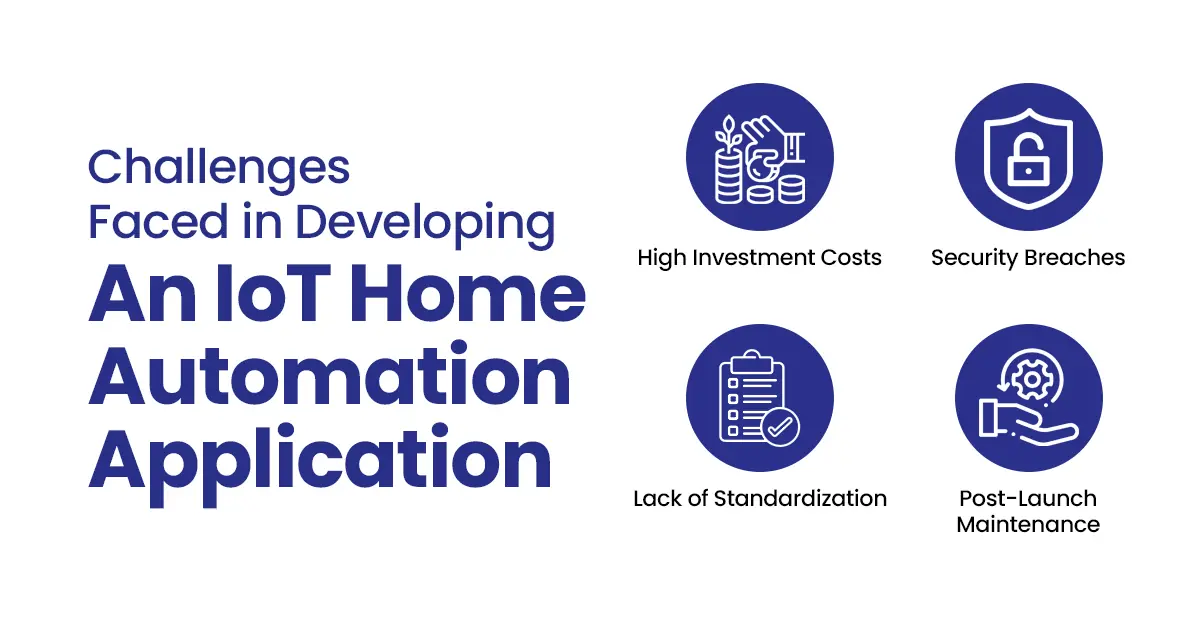
1. High Investment Costs:
The development cost of IoT can be high, but breaking the process down into smaller, more manageable implementations with specific milestones and costs can help mitigate these expenses.
2. Security Breaches:
Security breaches and hacks are major concerns in the IoT app solution industry. As IoT ecosystems rely entirely on internet connectivity, they are vulnerable to cyber attacks.
3. Lack of Standardization:
Although there are numerous IoT standards in development, there is a lack of universal standardization in the industry. This issue can be resolved through patience as organizations such as IEEE and The Open Connectivity Foundation work towards creating a common IoT language.
4. Post Launch Maintenance:
IoT App Development Cost requires ongoing maintenance and support to keep up with evolving trends and technologies. To maintain an IoT application’s relevance, it is necessary to update it with the latest features and services.

Economize your IoT Home Automation App Development Budget with OneClick
Seeking a helping hand for your next Home Automation project? Kickstart your development engine with OneClick! OneClick is a leading iot app development company specializing in Smart Home IoT app development services. Our extensive experience spanning over a decade and exceptional product quality distinguish us from others in the field. OneClick’s development team can conduct the full-bore groundwork and devise a perfectly executable strategy for your next smart home automation project. Our advanced Machine Learning integration and cost-effective service model make us a top choice for clients seeking a reliable Smart Home automation solution.
Our Smart Home automation gateways and Home automation mobile IoT app solutions for OEMs provide a cost-effective and secure way of connecting IoT devices to leading cloud platforms. Our team of experts identifies and resolves all potential roadblocks that hinder IoT App Development Cost to ensure that our clients receive a seamless experience starting from day one. We provide post-delivery support to ensure that our clients have access to the best service quality throughout the life cycle of the product.



